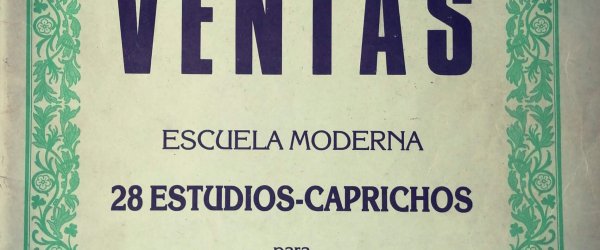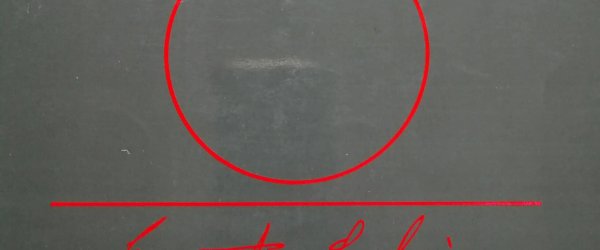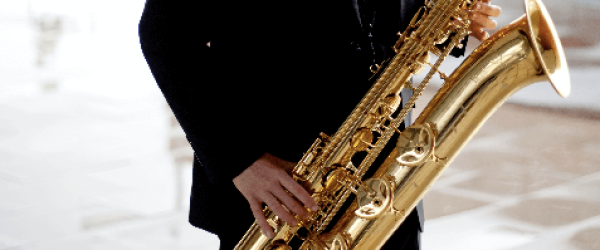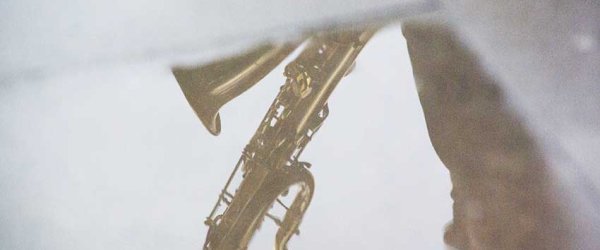
Picture from the album “Made in BCN” (LMG-2154, 2018). ©Jesús Llungueras
Music by Joan Bagés i Rubí is complex, dense and full of timbric details. HOLOFONIA v1.1 introduces you to the rich sound universe of this composer. You will enjoy!
The Composer
JOAN BAGÉS i RUBI (Lleida, Catalunya, 1977) is a composer, sound artist, pianist and professor based in Flix and Barcelona. His sound work focuses on instrumental music, electroacoustic music, sound installations and interactive music systems.
Far from treating independently these creative areas, his work traces a continuum based on the creation of networks among these disciplines. What unifies his creative work is the permanent research into that he calls the “Spectrum-morphological composition by different layers in a framework of holophonic creation”.
At the same time, he draws graphic notation systems derived from conventional notation, works with Interactive Music Systems and has developed the concept of “Sound Score”.
Click here to read more about the composer.
Details of the work
Live electronics (MAX).
Publisher: Contact the composer (joanbir@hotmail.com)
Duration: Around 12:30
Range (written): A2 – F6 (or as treble as possible)
TECHNIQUES: Some very fast excerpts. Extreme dynamics (ffff-pppp). Diversity of articulations. Slaps. Tongue Rams. Trumpet sounds. Wide intervals. Nodal sounds (note, air and smorzando simultaneous). Air sounds and transitions. Kiss sounds. Use of voice (phonemes). Glissandi and portamenti. Different kind of key sounds. Teeth on reed. Extreme altissimo register. Flatters. Multiphonics. Trills and tremolos. Oscillations. ¼ tones.
PERFORMANCE: To play with lots of intensity and decision. Recommendable to play with two microphones: a normal and a contact one.
Meaning and Structure of Holofonia v1.1
My idea was to explore the concept of holophonia, as a global sound formed by several morphological layers. Several sound morphologies are explored in every section of the piece. From the heterogeneity, we can have the perception of something that works as a whole. Saxophone and electronics work as a single hyper-instrument.
I would like that the listener perceives a rich, dense, complex sound which allows him to come on in, to find out through the paths, to cross corners of the sound in order to make him discover new relationships among the layers. A sound that lets the listener enter inside the material as in a sound microscope. (Joan Bagés i Rubi, 2018)
In an instrumental point of view, HOLOFONIA v1.1 is a really challenging piece due to the copious amounts of extended techniques used. When I studied it, I felt I was in the limits of the physical possibilities of the baritone saxophone. There are different sorts of simultaneous sounds (as nodal sounds, a blend of treble harmonic with air sound and smorzatto), unusual sounds (kiss sounds, changes of vowels and consonants, etc.) and polyrhythms, etc. Furthermore, about a 60% of the work is written to be played without mouthpiece.
Although the saxophonist should activate the changes of presets (a total of 116!) with a pedal, let this function to the sound artist. I always found it stressing because the pedal not always activated well the electronics part. If you have the chance to play it in duo with a good sound artist, you both will enjoy this piece much more. The electronics part is very dynamic, organic and requires a good performer. Would not you play a Sonata with piano from our classical repertoire with a good pianist? I feel fortunate to play this one and other works in a duo project with Joan Bagés, an excellent electronics performer too. In my opinion, any acoustic instrument and electronics will be the basic chamber music formation in the next future…
There is a shorter version of this work, HOLOFONIA v1.2, about 8 minutes long, This version has the same elements than the original. I was pleased to premiere both with the composer.
—
Would you like to know more about HOLOFONIA v1.1 by Joan Bagés i Rubí? Would you like to work on it? Don’t hesitate to contact me for more questions.
Joan Martí-Frasquier
Barcelona, May 2018
Update: March 2025



![15 Advanced Works for Baritone Saxophone [2] 15 Advanced Works for Baritone Saxophone [2]](https://joanmf.com/wp-content/uploads/elementor/thumbs/15-Advanced-Works-for-Baritone-Saxophone-2-ra3ttwqci012qs6fqnu49f7x6h6nihiw6j1idodd50.png)

